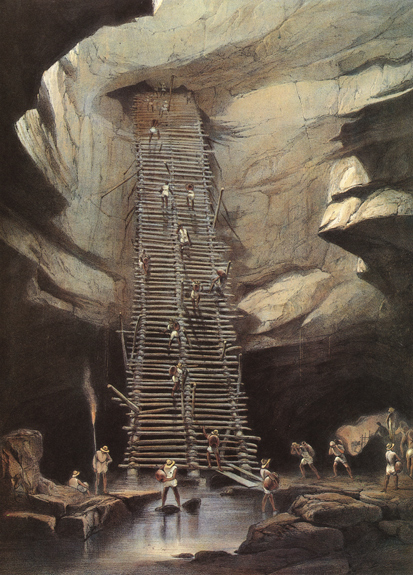
Drawing From the Past: Maya Antiquity Through the Eyes of Frederick Catherwood
Plate 20: Well at Bolonchen
|
Plate 20, Well at Bolonchen |
The town of Bolonchen (“The Village of Nine Wells”) is located on the Yucatán peninsula and is known today for its magnificent caves. It is in a desert region of Mexico, where there are no rivers and the only source of fresh water flows deep beneath limestone shelves. Catherwood’s drawing emphasizes the physical labor involved in obtaining water in this part of the world, while at the same time creating a romantic perspective on the mysteries of the Maya people. Light floods in from the mouth of the cave, yet the only illumination at the bottom of the cavern is the incandescent glow of a single torch. The rest of the cave is lost to darkness. One can hardly imagine the labor involved in building this ladder which provides the only access to the well below. Stephens and Catherwood, as well as other scholars of the time, wrote about the descendants of the ancient Maya as primitive and lacking the glory of their ancestors. However, this 80-foot-tall wooden ladder shows more than a glimmer of the past. Like their ancestors, the Maya of the 19th century were quite capable of using raw materials in a skillful and functional manner. [Spanish version]. KATE O’CONNOR-MORRIS and AYLA SCHLOSSER |

